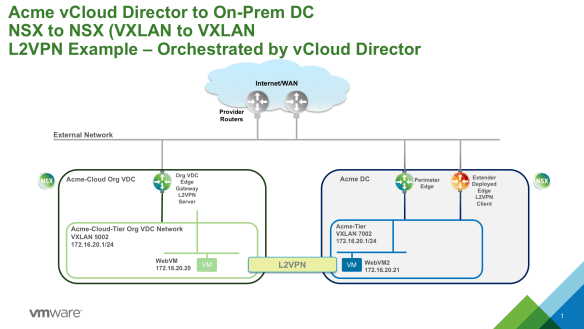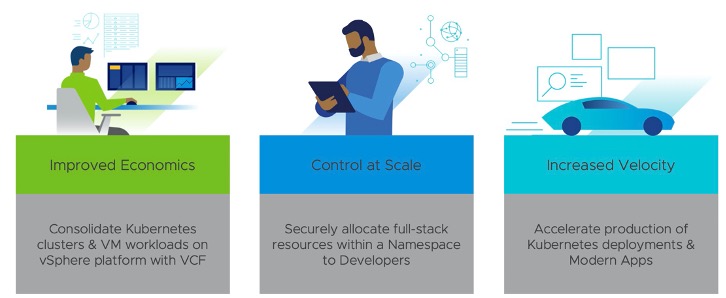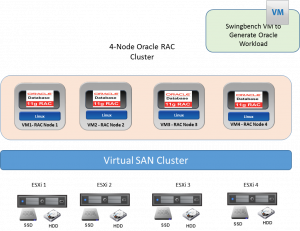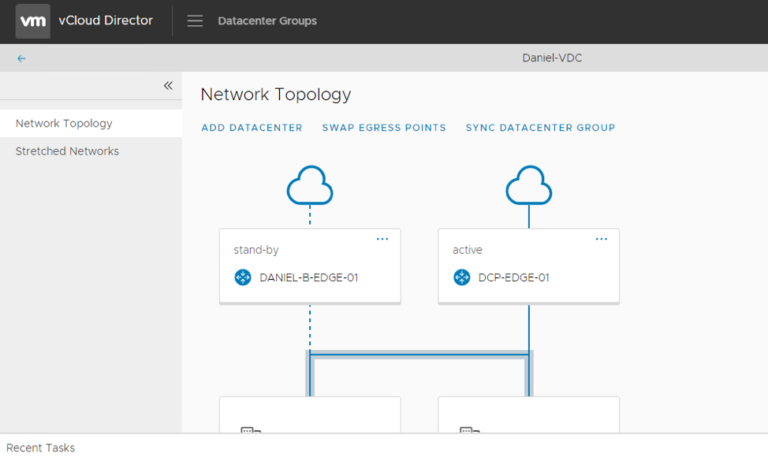Introduction
Contents
VMware Cloud on AWS continuously enhances the feature sets to provide the best hybrid cloud platform to host Microsoft SQL Server (SQL Server) workloads. In addition to the long-existing capabilities to host SQL Server Always On Availability Groups (AGs), the new, recently introduced feature– SCSI-3 Persistent Reservations (SCSI3-PRs) native support – makes it possible to host SQL Server Failover Cluster Instances (FCI) on VMDKs natively on VMware Cloud on AWS.
The ability to host a cluster with shared disks on the public cloud without any 3d party tools is a very unique capability of VMware Cloud on AWS. It gives DBAs and Infrastructure Architects a lot of flexibility in choosing the best design to run SQL Server workloads on the hybrid infrastructure. You can decide how you want to proceed:
- Migrate an existing SQL Server FCI cluster without the reconfiguration and later move to the more robust AGs configuration;
- Retain the shared disk cluster configuration for small, two nodes deployments, and continue to use SQL Server Standard licenses.
SCSI-3 Persistent Reservations (SCSI3-PRs) native support on VMware Cloud on AWS
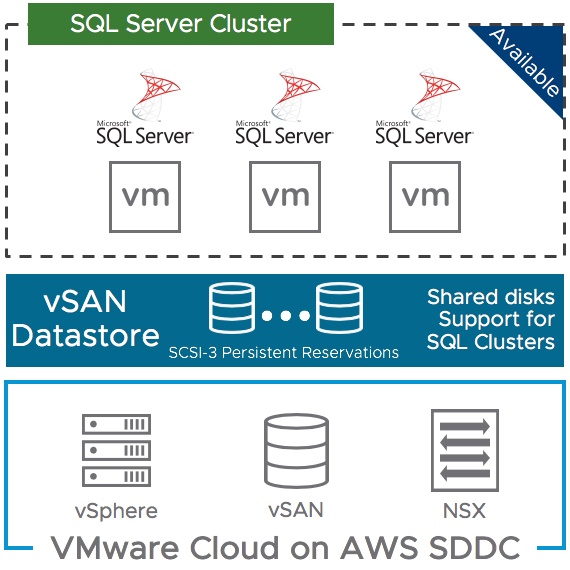
SCSI3-PRs native support enables customers to create a new or move an existing Windows Server Failover Cluster (WSFC) with up to 6 nodes and 64 shared disks to VMware Cloud on AWS. SCSI3-PRs commands, used by WSFC to claim the ownership of a shared disk, are transparently passed to a VMDK and are arbitrated on the vSAN layer to simulate a dedicated LUN. To facilitate the ability to use direct SCSI commands, it’s required to set the SCSI bus sharing on a vSCSI controller of a VM, node of a cluster, hosting clustered VMDK(s), to physical. Consult this great technical article for more details on how to configure a VM on VMware Cloud on AWS for a WSFC deployment.
For customers actively using or just planning to use VMware Cloud on AWS the question “how to migrate my current clustered SQL Server workload to VMware Cloud on AWS” is a key in the journey to adopt a hybrid cloud solution. VMware supports the ability to cold migrate SQL Server FCI configurations using physical RDMs (regardless of the underlying storage protocol – FC, iSCSI or FCoE) to VMware Cloud on AWS. The migration does not require complex operations and consists of the following steps:
- Preparing a WSFC cluster hosting SQL Server FCI with physical RDMs for a cold migration – you need to shut down the WSFC cluster and power-off all nodes of the cluster;
- Executing cold migration of the first node of the cluster to a VMware Cloud on AWS. Physical RDM(s) will be converted to VMDK(s) on VMware Cloud on AWS;
- Migrating of remaining nodes of the cluster. Before the migration, all VMs hosting remaining (non-migrated) nodes of the cluster should be reconfigured: shared pRDMs should be removed from the VM configuration;
- Adding clustered disk resources back to migrated VMs using VMDKs from the first migrated VM;
- Validating cluster functionality and starting the cluster on VMware Cloud on AWS;
- Applying configuration and performance optimization recommendations for SQL Server workloads and vSAN.
We updated the document Microsoft SQL Server Workloads and VMware Cloud on AWS: Design, Migration, and Configuration with relevant technical details and step-by-step migration guide.
Summary
Support for SCSI3 persistent reservations and ability to host SQL Server FCI on a SDDC on VMware Cloud on AWS provides a flexibility and add design choices for customers looking to host high available SQL Server solutions on the hybrid cloud infrastructure. This blog article and the migration document cited above provides all necessary technical details and guidelines how to design, create or migrate, and maintain a SQL Server Failover Cluster Instances on VMware Cloud on AWS.

